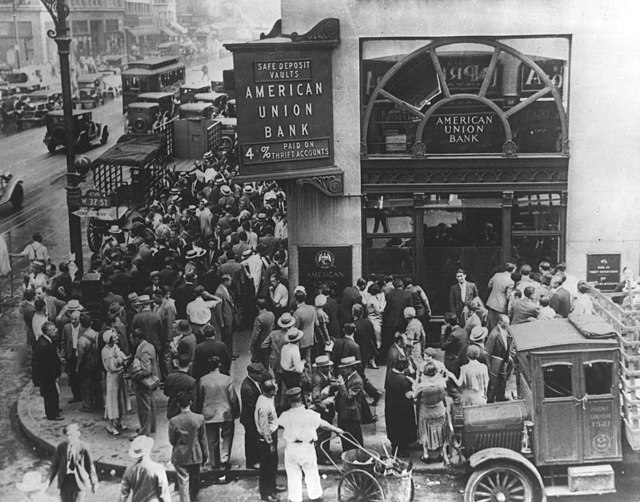Federal Deposit Insurance Corporation
The Federal Deposit Insurance Corporation (FDIC) is a United States government corporation supplying deposit insurance to depositors in American commercial banks and savings banks. The FDIC was created by the Banking Act of 1933, enacted during the Great Depression to restore trust in the American banking system. More than one-third of banks failed in the years before the FDIC's creation, and bank runs were common. The insurance limit was initially US$2,500 per ownership category, and this has been increased several times over the years. Since the enactment of the Dodd–Frank Wall Street Reform and Consumer Protection Act in 2010, the FDIC insures deposits in member banks up to $250,000 per ownership category. FDIC insurance is backed by the full faith and credit of the government of the United States, and according to the FDIC, "since its start in 1933 no depositor has ever lost a penny of FDIC-insured funds".
Example of FDIC insurance coverage
The FDIC's satellite campus in Arlington, Virginia, is home to many administrative and support functions, though the most senior officials work at the main building in Washington
President Franklin Delano Roosevelt signs the Banking Act of 1933.
Bank sign indicating the original insurance limit offered by the FDIC of $2,500 in 1934
A bank run or run on the bank occurs when many clients withdraw their money from a bank, because they believe the bank may fail in the near future. In other words, it is when, in a fractional-reserve banking system, numerous customers withdraw cash from deposit accounts with a financial institution at the same time because they believe that the financial institution is, or might become, insolvent. When they transfer funds to another institution, it may be characterized as a capital flight. As a bank run progresses, it may become a self-fulfilling prophecy: as more people withdraw cash, the likelihood of default increases, triggering further withdrawals. This can destabilize the bank to the point where it runs out of cash and thus faces sudden bankruptcy. To combat a bank run, a bank may acquire more cash from other banks or from the central bank, or limit the amount of cash customers may withdraw, either by imposing a hard limit or by scheduling quick deliveries of cash, encouraging high-return term deposits to reduce on-demand withdrawals or suspending withdrawals altogether.

American Union Bank, New York City, April 26, 1932
10 livres tournois banknote issued by Banque Royale, France, 1720. In 1720, shareholders demanded cash payment, leading to a run on the bank and financial chaos in France. On display at the British Museum.
The run on the Montreal City and District Savings Bank, with the mayor addressing the crowd. Printed in 1872 in the Canadian Illustrated News.
A poster for the 1896 Broadway melodrama The War of Wealth depicts a 19th-century bank run in the U.S.








